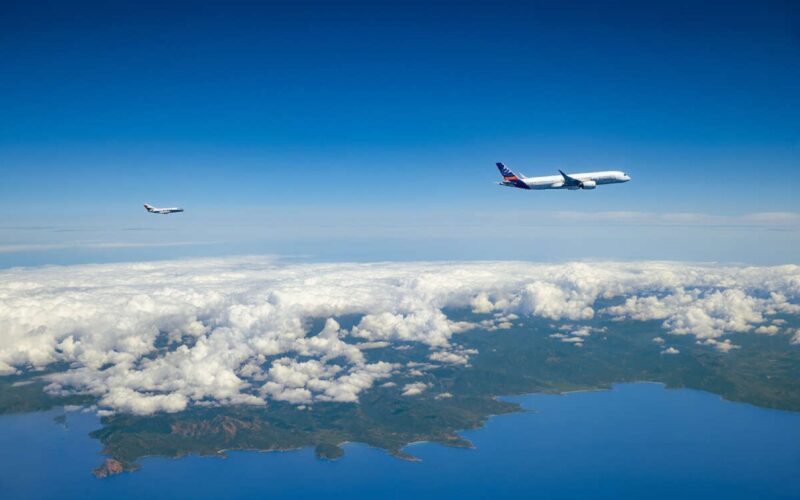The University of Cambridge has outlined four new sustainable aviation goals that could help the aviation sector to achieve net zero emissions by 2050.
The report, titled ‘Five Years to Chart a New Future for Aviation’, outlines a five-year plan and “establishes four pivotal 2030 Sustainable Aviation Goals, each targeting key leverage points within the sector”. The roadmap was developed by the Aviation Impact Accelerator (AIA) in collaboration with the University of Cambridge.
The aviation industry currently contributes approximately 2.5% of global CO2 emissions, and when non-CO2 effects are included, its contribution to climate warming increases to approximately 4%.
Despite ambitious pledges from governments and industry to achieve a net-zero aviation sector by 2050, the sector remains “dangerously off track”, noted the report which was published on September 23, 2024.
“Aviation stands at a pivotal moment, much like the automotive industry in the late 2000s,” said Professor Rob Miller, Director of the Whittle Laboratory and one of the report’s authors. “Back then, discussions centered around biofuels as the replacement for petrol and diesel – until Tesla revolutionized the future with electric vehicles.”
The aviation sector can achieve net zero emissions by 2030 if both the industry and governments meet four key goals, the report added.
According to the report, the main aim is to eliminate contrails created by airplanes, which could “reduce aviation’s climate impact by up to 40%”. To achieve this, several large-scale living labs will be set up in 2025 to implement a global system for avoiding contrails.
Cambridge researchers also suggest making efficiency improvements. They advise boosting aircraft production to reduce the average age of the fleet, cut flight speeds by about 15%, and extend transatlantic flight times by roughly 50 minutes. The goal is to have more aircraft operate close to their design range.
The third goal is to change sustainable aviation fuel (SAF) policies to “account for global biomass limits across all sectors while driving renewable electricity production”. This would provide the market with the assurance needed to rapidly increase SAF production and ensure its sustainability.
The final goal is to launch several moonshot technology demonstration programs. One example is hydrogen-powered aircraft for long distances. Hydrogen fuel is lightweight, even when considering the weight of the tanks, which makes it beneficial for long flights. Using hydrogen would eliminate CO2 emissions from air travel.
The report warned that if these goals are “not implemented and achieved by 2030, the opportunity for transformation will slip away, leaving the world to face the escalating climate impacts of the aviation sector, which is projected to at least double by 2050”.

